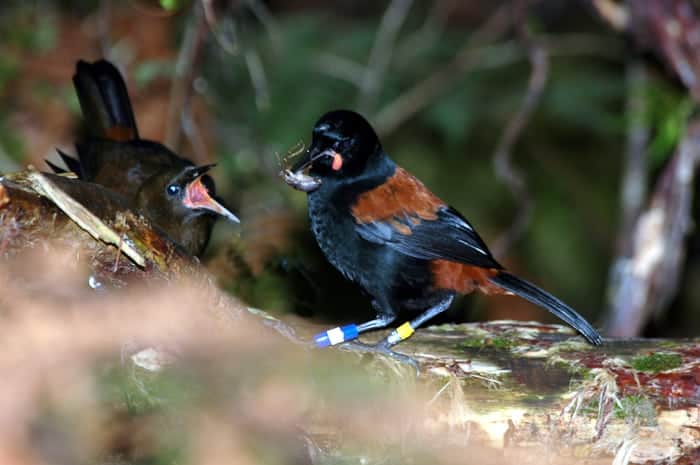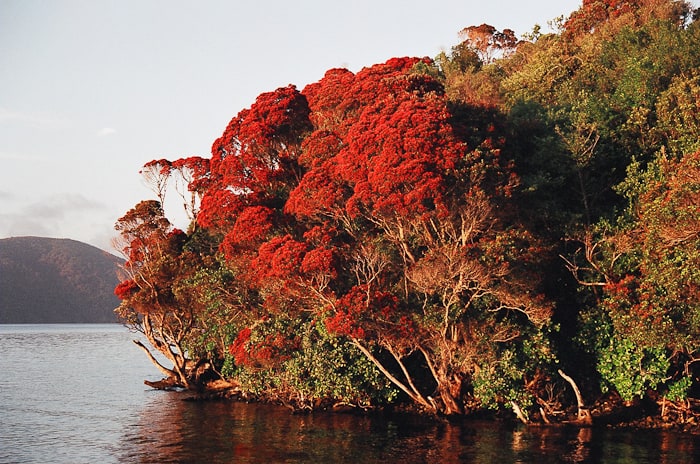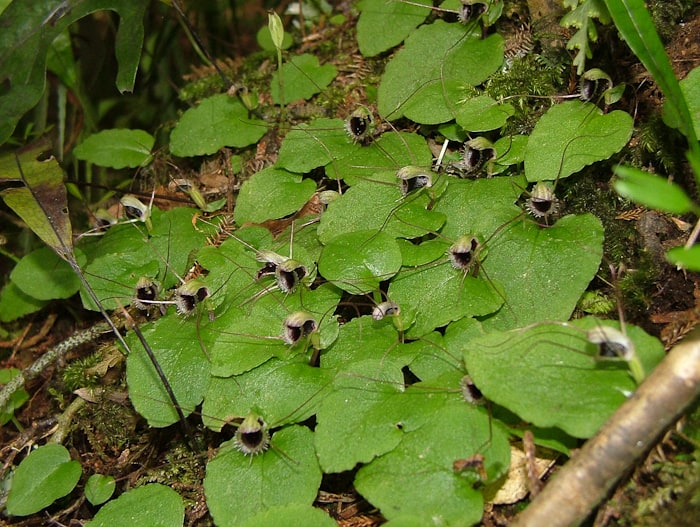Ulva Open Sanctuary
In some of my previous posts and certainly in future posts Ulva Islandwhere I work as a guidewill be mentioned. It occurs to me that people may be a bit unsure of just what, where and why Ulva is so important as asanctuary. So I have reposted below part of an article I wrote a couple of years ago.
Ulva Island.
Early in 1969 at age 21 I was sent to Stewart Island as Forest Service Ranger. Total work force on the Island was me. Part of my area of responsibility was Ulva Island, 260 odd hectares of (then) Scenic Reserve, situated within Paterson Inlet, just over a mile from Golden Bay.
Maori knew the Island as Te Wharawhara, ‘The Astelia Plant’, a name it shares with nearby Native Island. Early Europeans called it Coupars Island, after Stewart Coupar, a sealer who settled on the Neck.
The Ulva Island I inherited responsibility for back in 1969 was infested with both white tailed (Virginian) deer and rats. Virginian deer were liberated at Port Pegasus in the south of Stewart Island in 1905 and rapidly spread over the entire island and had reached Ulva Island by swimming. Rats of course have always followed mankind wherever mankind goes. Apart from the area immediately surrounding the old Post Office site there has been no felling of native forest on Ulva.
My immediate boss was Senior Protection Ranger Max Kershaw and even away back then Max had a vision for Ulva that I have to say has largely been achieved. One of his dreams was to have Ulva Island deer free and to that end I was instructed in hand baiting of palatables such as Griselinia littoralis, Psudopanax crassifolia and Coprosma lucida & etc with 1080 paste. I would spend a day every month or so baiting across the entire Island. After I left the department this project continued for several years until total eradication of the deer was achieved. The result has been outstanding, with through forest visibility dropping in some places from around 120 metres to 15 to 20. Regeneration of palatable species has been excellent. Max also encouraged me to liberate Stewart Island Brown Kiwi on Ulva, where they had previously been absent. Although no records were kept I understand 6 or 8 birds were transferred, with today’s population around 30/35 birds.
In 1987 the Department of Conservation (DoC) was formed, assuming control and responsibility for management of crown land on Stewart Island.
Following the very successful rat eradication program on Breaksea Island in Fiordland DoC extended the program to include Ulva Island, and in 1997 the Island was declared rat free. Thus allowing Ulva to join a very elite group of completely introduced animal free sanctuaries. Taking advantage of this DoC introduced several threatened species, including Stewart Island

Robin/Toutouwai, South Island Saddleback/Tieke, Yellowhead/Mohua, Rifleman/Titipounamu, Skink and Fernbird/Matata. All have prospered except Fernbird who apparently returned to where they came from. Rat control is an ongoing project, with on average a rat a year being detected getting ashore. While being involved with the deer eradication was personally satisfying, it was the removal of rats that has really allowed Ulva to start to regain its former glory. And so vulnerable are some of our native birds to rat predation, the 4 species mentioned above would vanish within 6 to 8 years were rats allowed to re-establish.

Approximately 5 k of hardened metalled walking trails were constructed to celebrate the gazetting of Rakiura National Park in 2002, these following the line of tracks established many decades previously by the old Tourism Department in partnership with the local council.
Ulva Island forests are a Rata/Kamahi/Podocarp association, nothofagus species having being unable to re-establish back across Foveaux Straits after the last ice age, some 15000 years ago. Sitting astride 46deg 55 sec south latitude Ulva Island is approaching the southern-most limit of Podocarp growth. Rimu Dacrydium cupressinum dominate and do well, with DBH on larger specimens approaching 2 metres and total height of 20 or even 30 plus metres. Miro, Prumnopitys ferruginea although common, do less well, with the majority of specimens displaying signs of shake as well as malformed trunks and limb defects. Totara is represented by Podocarpus hallii are numerous but are almost universally seriously deformed. These deformities are a result of latitudinal and climate stress, and it is remarkable that just 80 k to the north in Rowellan Forest both Miro and Totara do well, as I remember cruising superb specimens back when the mills were still operating there in 1965. To further compound these form defects P. hallii are subject to severe Kaka damage, with birds stripping bark in search of insects and to source sap from the resulting wounds. Kaka have always damaged trees, but with kaka nesting success being much enhanced by the removal of predatory rats the population has

significantly increased with an equally obvious upsurge in bark damage. Totara seem to be able to survive this to a remarkable extent, but eventually the tree must succumb.It is unusual to find an adult tree undamaged. However the resulting hollow trees (in time) present ideal nesting opportunities for the cavity nesters (about 25% of our Ulva species)
Even Rimu are attacked, some trees losing significant areas of bark, often ultimately fatal. Miro for some reason seem more or less immune to this attention. Kamahi, Weinmannia racemosa, are very numerous and provide a significant nectar source in early summer for Tui and Bellbirds, who delicately “dip” each individual blossom. Parakeets and Kaka on the other hand graze the racemes like lawn mowers.

Southern Rata…. Metrosiderous umbellata … are common, with significant specimens throughout the forest.
A real beneficiary of the rat eradication is Lancewood, Psudopanax crassifoli whose small seed seem particularly attractive to rats. On mainland Stewart Island juvenile P. crassifoliais an occasional plant. Walking from Millars Beach to Whalers Base on mainland Stewart Island I counted only 6 specimens, 1 every 100 metres or so. In similar forest on Ulva it is not unusual to average 1 every metre and with significant thickets of 20 or more plants in a few square metres. Not unsurprisingly most are quite small, and probably no more than a dozen years old, indicating the period since rat eradication.

Orchids have also thrived post rat, and where just a handful of years ago they were quite rare it is now difficult to walk through the forest without standing on Spider Orchids. Aporostylis bifolia has also showing a remarkable increase over the past 4 years.
Ulva Island is a showcase for, and justification of, the benefits of animal control in our conservation estate, both public and private. And while the cost can be significant the monetary return to the nation’s overall economy are in my mind justification without even considering the ecological return. Visitor numbers to Ulva 40 years ago probably was around 5000 people per year. It is currently around 30000 and climbing. Some 10 local businesses derive a significant part of their income directly servicing Ulva Island visitors. This does not include accommodation and other peripheral businesses. In our own case we package our guided Ulva Island walks with our bed & breakfast accommodation. We would “lose” maybe 6 guest nights a year when potential bookings do not want to visit Ulva. The Ulva Island project has been so successful a local environmental trust (SIRCET) took the lead as demonstrated on Ulva and successfully established a rat and opossum control program within the village. And on the basis of this success gained funding from the Tindall Foundation to explore the possibility of mounting a similar project targeting rats, feral cats and opossum over the entire Stewart Island. The scoping document can be down loaded by following this link :- http://www.sircet.org.nz/Eradication%20scoping%20plan.pdf
Dr Leonard Cockayne’s report of 1907 put it thus :-
The face of the world is changing so rapidly that soon, in temperate regions at any rate, there will be little of primitive Nature left. In the Old World it is practically gone forever. Here then is Stewart Island’s prime advantage, and one that is hard to overestimate. It is an actual piece of the primeval world.
New Zealand is an ancient world, but a young country. The natural environment has been subjected to huge modification since mankind first arrived here. While I wish some species had not been introduced, I refuse to blame our forbears. They did the best they knew at the time. However we now have the tools and hopefully the will to return at least some of our natural areas to their former glory. Ulva shows just what can be done. Come and see for yourself.
Subsequent to this article being written rats re-established on the Island, and the following remedial operation was undertaken. The invasion was either by swimming or as hitchhikers aboard a visiting vessel.
DoC in consultation with the relevant experts in animal control, and with the wholehearted support of the local community decided to attack this re-infestation at a projected cost of around $60,000. . This time using helo dropped pellets containing the poison brodifacoum. The 2 drops necessary were conducted in late winter, and so far there has been no sign of rats at all. The program was not without its cost, as some 40% of Stewart Island Robins, ditto Saddlebacks and perhaps as high as 90 % of weka were also victims of the poison. However when this is balanced against the certain total loss of all 4 liberated species, as well as a significant “hit” on almost all 18 land species present on the Island were the rats allowed free reign then the issue was not in doubt. And on a positive note my own observations lead me to believe that within no more than a year from now we should be back to pre rat numbers for Robins and Saddlebacks, and a couple of years out Weka should also have recovered.
The control program was apparently the first that has ever been successfully attempted on an emerging population where the food sources were abundant. And as such, quite apart from the successful (we hope) outcome, has also massively encouraged DoC and animal control experts in their ability to control these pests.
I hope that all this has been of interest to you, and help to explain the focus I will from time to time place on Ulva Island and on predatory introduced animals.
Peter Tait
Peter Tait is a professional nature guide based at Stewart Island, New Zealand, and he works primarily on Ulva Island Open Sanctuary. Peter has been resident on the Island for over 40 years and was one time Forest Ranger in Charge of Stewart Island. Fishing followed forestry and was in turn followed by Talisker, a 17m charter yacht. He is qualified Skipper Deep Sea Fishing Vessel. In addition to guiding Peter and his wife Iris are hosts at Sails Ashore Lodge.
Leave a Reply